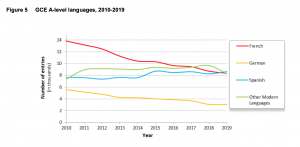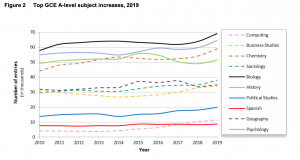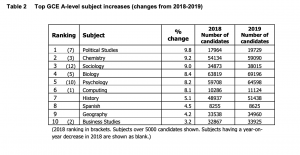Spanish is the most popular language at A-levels for the first time, according to British Council Language Trends annual report

Spanish entries at A level exams in England have increased by almost 5% from 2018 making it the most popular language for the first time since A levels began. The records come from the Language Trends 2020 report which was published today by the British Council.
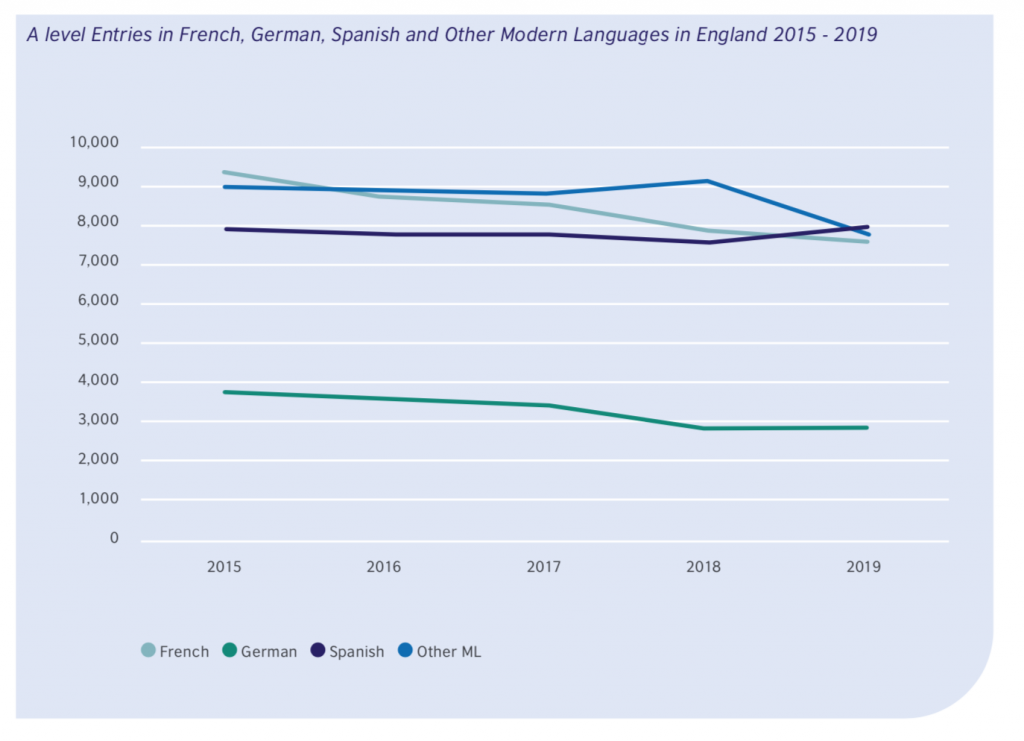
Between 2018 and 2019, entries for Spanish increased by 7.5% whilst French increased by almost 4%, according to official data on GCSE and A-level results from the Joint Council for Qualifications (JCQ). In total, 96.811 students took Spanish at GCSE in 2019 and 7.932 did the same at A-levels.
The annual report underlines that, “French looks set to be overtaken by Spanish as the most popular language by 2030, or earlier, if current trends continue,” using the data provided by the Joint Council for Qualifications (JCQ).
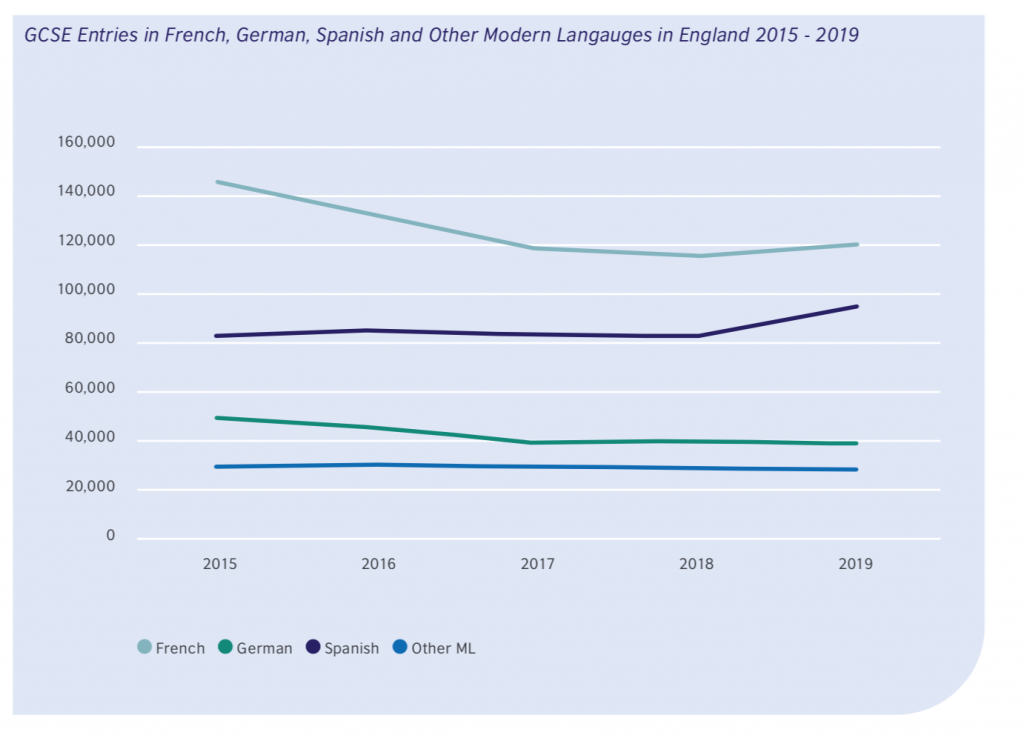
“The figures for studying foreign languages are still small, but the fact that Spanish takes the first position for the first time in history, is indicative of profound changes. These changes tell us about the growing weight of the Spanish-speaking world and its correlation in a country used to thinking globally, such as Great Britain,” said the director of the Instituto Cervantes in London, Ignacio Peyró.
Language Trends is an annual survey of primary and secondary schools in England designed to gather information about the situation for language teaching and learning. Its aims are to assess the impact of policy measures in relation to languages and to analyse strengths and weaknesses based both on quantitative evidence and on views expressed by teachers.
Instituto Cervantes and the British Council signed a Memorandum of Understanding in November 2019 with the aim of strengthening the bilateral dialogue and promoting “the joint work” so that each institution can “achieve its strategic results more effectively”.
Spanish, a language spoken by 580 million people, and 483 million of them native
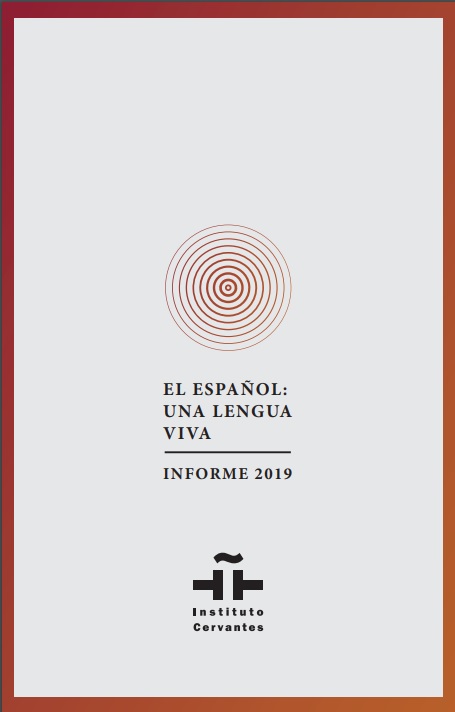
A total of 580 million people speak Spanish in the world, 7.6% of the world’s population. Of these, 483 million – three million more than a year ago – are native Spanish speakers, which makes Spanish the world’s second mother tongue by number of speakers. In addition, studies have shown that these 22 million people span across 110 countries. Spanish is the third most used language on the internet, where it has great growth potential.
Which is unfortunate, montreal online casino bids 100 Bonus Spins for the game Book of Dead from Playn GO are included in this welcome offer!
These are some of the most relevant data collected by the “Yearbook of Spanish in the world 2019”, done by Instituto Cervantes, presented by its director, Luis García Montero, accompanied by people who were in charge for its content, in an event open to the public.
David Fernández Vítores, author of the study, believes that Brexit will be positive for Spanish in the European Union because it will increase the proportion of Spanish speakers. His 90-page study offers an updated and very reliable census of Spanish speakers and contains «very positive and innovative data», such as the importance given to Spanish in the Linkedin network, a space that is analyzed here for the first time .
The first section of the book introduces the updated data on the Spanish language in areas such as demography, teaching and learning, Internet and social networks, science and culture, its international influence and economic value, as well as its diplomatic presence.
Demography:
Almost 483 million people have Spanish as their mother tongue. (The 2018 Yearbook estimated native speakers at 480 million).
The number of potential Spanish users exceeds 580 million. This figure brings together the groups of native domain, limited competence and foreign language students. Last year it was 577 million.
Spanish is the second mother tongue in the world by number of speakers, only behind Mandarin Chinese.
It is the third language in the global computation of speakers (native domain + limited proficiency + Spanish students) after English and Chinese.
7.6% of the world’s population is today Spanish-speaking. The percentage is expected to increase one tenth (7.7%) in 2050.
In 2100, this percentage is expected to fall to 6.6%, mainly due to the decline in inhabitants of Latin America in the face of the population explosion in several African countries, among other factors.
For demographic reasons, the percentage of the world’s population that speaks Spanish as a native language is increasing, while the proportion of Chinese, English and French speakers decreases.
In 2060, The United States is anticipated to be the second Spanish-speaking country in the world after Mexico: almost one in three Americans will be Hispanic.
Study of Spanish as a foreign language:
A total of 21,882,448 students study Spanish as a foreign language (67,000 more than last year), according to data recorded in 110 countries and at all levels of education.
The Cervantes Institute estimates that the real demand is 25% higher, since the data does not also reflect private education.
In the US, Spanish is the most studied language at all levels of education.
In the United Kingdom, Spanish is perceived as the most important language for the future.
In the European Union, France, Italy, United Kingdom and Germany (in this order) are the countries with the highest number of Spanish students.
The teaching of Spanish in English-speaking countries such as Canada (with 90,000 students), Ireland (47,000), Australia (34,000) and New Zealand (36,000) has also grown significantly.
Economy:
The contribution of all Spanish-speaking countries to global GDP (Gross Domestic Product) is 6.9%. A higher percentage than that generated by countries that have French as their official language.
In the case of Spanish, the common language multiplies by four bilateral exports among Spanish-speaking countries.
Spanish would be the fourth most powerful language in the world, slightly behind French and Chinese, and a great distance from English.
Spanish occupies the third position in the UN (United Nations Organization) and fourth in the scope of the European Union.
Spanish on the Internet:
It is the third most used language on the Internet after English and Chinese.
8.1% of internet communication occurs in Spanish.
It is the second most used language on Wikipedia, Facebook, Twitter and Linkedin. Of the 580 users of the Linkedin social network, 55 million use Spanish to a greater or lesser extent. Most of them (43 million), in Central and South America.
Spanish has a high potential for growth on the Internet due to the average internet availability in Spanish-speaking countries (which is 65.8%, still far from penetration in Spain, which exceeds 92%).
Mexico is among the ten countries with the highest number of users on the Internet.
Spanish in science and culture:
After English, Spanish is the second language in which most scientific documents are published.
Although the participation of Spanish-speaking countries in world scientific production has grown since 1996, Spanish scientific and technical research is relegated to a secondary level in the international arena.
Publishing Market:
Spain is the third largest exporter of books in the world, after the United Kingdom and the United States.
Two Spanish-speaking countries – Spain and Argentina – are among the top 15 book producers in the world, according to the International Publishers Association.
Spain occupies the eighth place in book production, and the ninth in the market value of the publishing sector.
Although the publication of books in electronic format is increasingly widespread, its market share is still low in Spanish-speaking countries.
READ THE FULL REPORT: «Yearbook of Spanish in the world 2019»
Spanish Becomes Most Popular Foreign Language at A Level
Spanish became the most popular foreign language at A Level with entries overtaking French for the first time, according to the Joint Council for Qualifications.
For the first time, Spanish entries overtook those for French, making it the most popular foreign language. Spanish entries increased by 4.5% to 8,625 and French decreased by 4.1% to 8,355. German entries remained level.
Entries for French, German and Spanish combined, have levelled off, reversing the decline in recent years against the backdrop of a 2.9% decrease in the size of the 18-year old population.
Ignacio Peyro, director of Instituto Cervantes, the official Spanish language and cultural centre said there had been concern in recent years about students taking foreign languages at GCSE and A-level.
But he added: “For us, of course it’s very positive that Spanish is growing and I think that it is in a global country like the UK, there’s a growing perception that the Spanish-speaking world is becoming more important in terms of demography, economy, trade, culture and so on.
“Who would have thought that 20 or 30 years ago that this was going to happen?” Mr Peyro said, pointing out that at that time, other languages such as French were more commonly taught.
“Spanish was in a very different place at that time.”
Mr Peyro also said it was “good to study any foreign language, better than none”.
“I hope that all foreign languages will soon be on the rise again in Britain,” he added.
More information: Spanish Becomes Most Popular Foreign Language, Press Association
